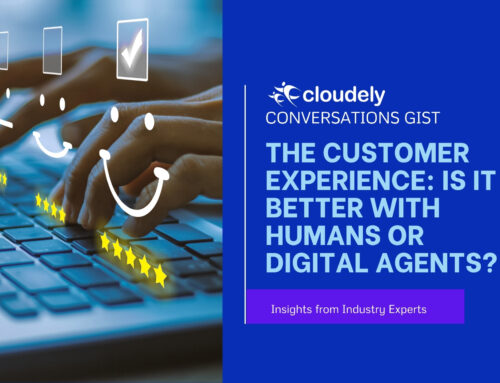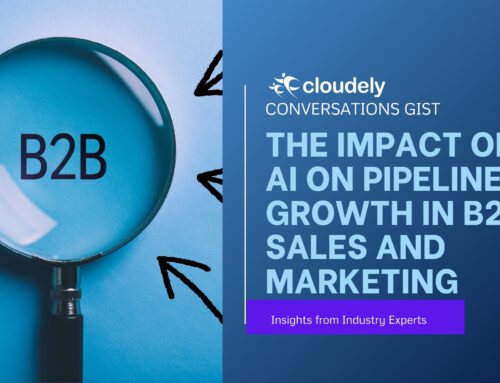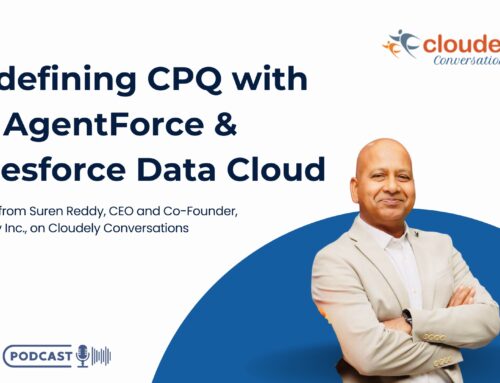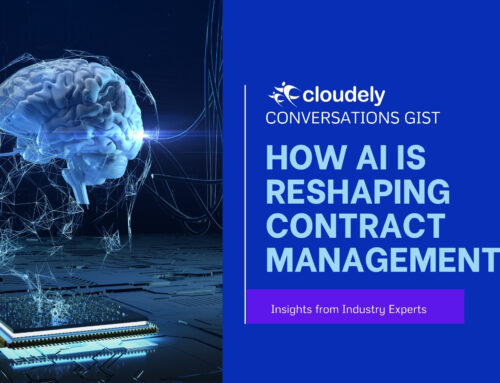In the evolving landscape of artificial intelligence, a new paradigm is emerging — one where intelligence itself becomes currency. In a recent episode of Cloudely Conversations, host Eric Dreshfield sat down with Reddy Mallidi, Author of the #1 best-selling book “Leading with AI Agents, and Suren Reddy Katta, CEO and Co-founder of Cloudely, to unpack how agentic ecosystems are transforming the economics of AI — from cost centers to revenue engines.
Table of Contents
From TCO to TCI: The Rise of Total Cost of Intelligence
Traditionally, technology investments were measured by total cost of ownership (TCO). But as Suren Katta explained, in today’s AI-driven world, this metric is evolving into something richer — total cost of intelligence (TCI).
Katta outlined three emerging models reshaping how organizations perceive AI investments:
- Usage-based — where cost aligns with the level of AI utilization.
- Outcome-based — where payment is tied to measurable business results.
- Shared ROI — where vendors, partners, and customers co-create and share value derived from agentic systems.
Reddy Mallidi elaborated on this shift, noting that intelligence today carries a broader definition than ever before.
“When we talk about the total cost of intelligence, it’s not just the sticker price of implementing AI,” he said. “It includes upfront investments — talent, architecture, and data preparation — and the ongoing operational costs of running large language models (LLMs), APIs, and infrastructure.”
But more importantly, AI agents have turned intelligence into a strategic revenue generator.
“Organizations can no longer view intelligence as a cost center,” Mallidi emphasized. “They need to recognize the competitive advantages and new business models these agents enable.”
From Knowledge to Action: Why Agents Are the New Game-Changers
“Knowledge is everywhere,” said Suren Katta, “but only action creates value.” He described AI agents as the missing link between knowledge and execution — tools that never tire, never lose focus, and act 24/7 to deliver consistent productivity.
While early AI implementations may seem costly, he pointed out that the long-term gains are exponential.
“If a $25 investment yields $100 of outcome, that’s a 4x return. And the surplus can be reinvested into innovation, customer value, and ethical guardrails,” he explained.
Cost Optimization: Turning AI from Expense to Efficiency
When asked about balancing performance and cost, Reddy Mallidi referenced insights from his book Leading with AI Agents, which became an Amazon bestseller within 36 hours of release.
“Cost optimization isn’t just about reducing spend — it’s about designing smarter,” he explained. From strategic architecture and caching methods to data storage decisions, every technical choice can drastically impact operational costs.
He illustrated this with a real-world example:
“A winery in Napa realized they could save $30,000 a month by moving historical data off the cloud to local servers. By keeping only the last year’s data on-prem, they cut unnecessary API calls and infrastructure costs — without losing intelligence.”
Such tactical thinking, Mallidi noted, is what distinguishes AI hobbyists from AI strategists.
AI in Sales: The Next Frontier of Agentic Productivity
The discussion naturally shifted to sales — the heartbeat of any organization.
“Every step of the sales cycle, from lead to renewal, is becoming agentic,” said Katta. “Each action generates measurable ROI — often 4x, 8x, or even 10x improvements in productivity.”
Mallidi reinforced this with a compelling case study from BMC Software, which deployed a multi-agent system called Mickey from Avizo. The impact was profound:
- 70% reduction in time spent understanding sales data
- Multi-million-dollar productivity gains
- Forecasting accuracy within ±2% — a first for the company
“These agents analyze CRM data, email activity, and pipeline signals to guide sales teams in real time,” Mallidi explained. “The result is not just efficiency — it’s strategic intelligence.”
Real-World Demonstrations: AI in Action
To illustrate how far agentic ecosystems have progressed, Suren showcased two of their in-house innovations during the podcast:
- AI-Powered Quoting Agent — Simplifies Salesforce quote management through natural language prompts.
- Automates quote creation, modification, and discounting.
- Offers real-time summaries and product-level insights.
- Margin Optimization Agent — Continuously monitors product margins within Salesforce.
- Flags at-risk deals.
- Recommends higher-margin alternatives.
- Automatically updates quotes and recalculates profitability.
“These tools make sales teams faster, smarter, and more confident,” said Suren. “Eventually, voice-enabled commands will make this process even more seamless — no logging in, no manual edits, just real-time results.”
Agentic Labor Markets: Redefining Productivity and Compensation
As AI agents grow more capable, a new question arises — how should human and digital labor be measured and rewarded?
Mallidi outlined three key metrics for evaluating “digital humans”:
- Task completion and accuracy — Did the agent perform as expected?
- Efficiency and performance — How fast and resource-efficient was the process?
- Reliability — How consistently can the agent operate under varying workloads?
He predicted that compensation models will shift from hourly rates to outcome-based structures, where digital agents (and their human counterparts) are rewarded for measurable value creation.
Suren added that as AI systems integrate across platforms — Salesforce, ServiceNow, Databricks, Snowflake, and more — the ecosystem costs will initially rise. But as optimization improves and collaboration deepens, value sharing will become the standard.
“It’s like engaging four consultants at once,” he said. “You pay more upfront, but the compounded outcome far exceeds the input.”
The Road Ahead: Intelligence as a Shared Asset
The conversation concluded on an optimistic note. Both speakers agreed that we’re entering an era where intelligence is not owned — it’s shared.
In this shared intelligence economy, AI agents act as collaborators, not competitors. They transform silos into ecosystems, and costs into collective gains.
As Reddy Mallidi aptly summarized:
“We’re moving from automation to augmentation — from reducing effort to amplifying potential. The organizations that understand this shift today will define the markets of tomorrow.”






